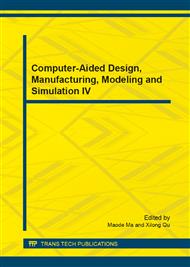p.626
p.631
p.636
p.641
p.646
p.651
p.656
p.660
p.665
Study on Web3D Technology in Safety Management of Petrochemical Enterprise
Abstract:
For the current safety management of enterprise, this paper describes the modern safety management based on the network environment. The system of major hazard installation (MHI) and its surrounding three-dimensional (3D) geographic information simulation is developed by using virtual reality (VR) technology to establish a digital virtual environment (VE) of petrochemical enterprise. Safety information simulation of petrochemical enterprise, which can be browsed through Web page and managed by human-computer interaction (HCI), is achieved by the seamless integration with the network. The safety management system (SMS) which is characterized by networking and digitization is eventually completed. It not only ensures the fluency of resource sharing but also the VR simulation provides the government and enterprises with a reasonable command platform to implement safety management efficiently.
Info:
Periodical:
Pages:
646-650
Citation:
Online since:
October 2014
Authors:
Price:
Сopyright:
© 2014 Trans Tech Publications Ltd. All Rights Reserved
Share:
Citation:


